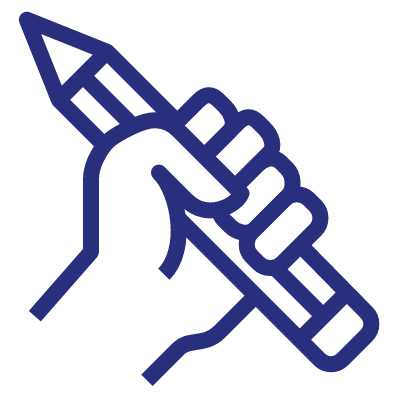PART I: INTEGERS AND EQUIVALENCE RELATIONS.
Preliminaries. Properties of Integers. Complex Numbers. Modular Arithmetic. Mathematical Induction. Equivalence Relations. Functions (Mappings). Exercises.
PART I!: GROUPS.
1. Introduction to Groups.
Symmetries of a Square. The Dihedral Groups. Exercises. Biography of Neils Abel
2. Groups.
Definition and Examples of Groups. Elementary Properties of Groups. Historical Note. Exercises.
3. Finite Groups; Subgroups.
Terminology and Notation. Subgroup Tests. Examples of Subgroups. Exercises.
4. Cyclic Groups.
Properties of Cyclic Groups. Classification of Subgroups of Cyclic Groups. Exercises. Biography of J. J. Sylvester. Supplementary Exercises for Chapters 1-4.
5. Permutation Groups.
Definition and Notation. Cycle Notation. Properties of Permutations. A Check-Digit Scheme Based on D5. Exercises. Biography of Augustin Cauchy.
6. Isomorphisms.
Motivation. Definition and Examples. Cayley’s Theorem. Properties of Isomorphisms.
Automorphisms. Exercises. Biography of Arthur Cayley.
7. Cosets and Lagrange’s Theorem.
Properties of Cosets. Lagrange’s Theorem and Consequences. An Application of Cosets to Permutation Groups. The Rotation Group of a Cube and a Soccer Ball. Exercises. Biography of Joseph Lagrange.
8. External Direct Products.
Definition and Examples. Properties of External Direct Products. The Group of Units Modulo n as an External Direct Product. Applications. Exercises.
Biography of Leonard Adleman. Supplementary Exercises for Chapters 5-8
9. Normal Subgroups and Factor Groups.
Normal Subgroups. Factor Groups. Applications of Factor Groups. Internal Direct Products. Exercises. Biography of Évariste Galois
10. Group Homomorphisms.
Definition and Examples. Properties of Homomorphisms. The First Isomorphism Theorem. Exercises. Biography of Camille Jordan.
11. Fundamental Theorem of Finite Abelian Groups.
The Fundamental Theorem. The Isomorphism Classes of Abelian Groups. Proof of the Fundamental Theorem. Exercises. Supplementary Exercises for Chapters 9-11.
PART III: RINGS.
12. Introduction to Rings.
Motivation and Definition. Examples of Rings. Properties of Rings. Subrings. Exercises. Biography of I. N. Herstein.
13. Integral Domains.
Definition and Examples. Fields. Characteristic of a Ring. Exercises. Biography of Nathan Jacobson.
14. Ideals and Factor Rings.
Ideals. Factor Rings. Prime Ideals and Maximal Ideals. Exercises.
Biography of Richard Dedekind. Biography of Emmy Noether. Supplementary Exercises for Chapters 12-14.
15. Ring Homomorphisms.
Definition and Examples. Properties of Ring Homomorphisms. The Field of Quotients.
Exercises.
16. Polynomial Rings.
Notation and Terminology. The Division Algorithm and Consequences. Exercises.
Biography of Saunders Mac Lane.
17. Factorization of Polynomials.
Reducibility Tests. Irreducibility Tests. Unique Factorization in Z[x]. Weird Dice: An Application of Unique Factorization. Exercises. Biography of Serge Lang.
18. Divisibility in Integral Domains.
Irreducibles, Primes. Historical Discussion of Fermat’s Last Theorem. Unique Factorization Domains. Euclidean Domains. Exercises.
Biography of Sophie Germain. Biography of Andrew Wiles. Supplementary Exercises for Chapters 15-18.
PART IV: FIELDS.
19. Vector Spaces.
Definition and Examples. Subspaces. Linear Independence. Exercises. Biography of Emil Artin. Biography of Olga Taussky-Todd.
20. Extension Fields.
The Fundamental Theorem of Field Theory. Splitting Fields. Zeros of an Irreducible Polynomial. Exercises. Biography of Leopold Kronecker.
21. Algebraic Extensions.
Characterization of Extensions. Finite Extensions. Properties of Algebraic Extensions
Exercises. Biography of Irving Kaplansky.
22. Finite Fields.
Classification of Finite Fields. Structure of Finite Fields. Subfields of a Finite Field.
Exercises. Biography of L. E. Dickson.
23. Geometric Constructions.
Historical Discussion of Geometric Constructions. Constructible Numbers. Angle-Trisectors and Circle-Squarers. Exercises. Supplementary Exercises for Chapters 19-23.
PART V: SPECIAL TOPICS.
24. Sylow Theorems.
Conjugacy Classes. The Class Equation. The Probability That Two Elements Commute. The Sylow Theorems. Applications of Sylow Theorems. Exercises. Biography of Ludvig Sylow.
25. Finite Simple Groups.
Historical Background. Nonsimplicity Tests. The Simplicity of A5. The Fields Medal. The Cole Prize. Exercises. Biography of Michael Aschbacher. Biography of Daniel Gorenstein. Biography of John Thompson.
26. Generators and Relations.
Motivation. Definitions and Notation. Free Group. Generators and Relations. Classification of Groups of Order up to 15. Characterization of Dihedral Groups. Realizing the Dihedral Groups with Mirrors. Exercises. Biography of Marshall Hall, Jr..
27. Symmetry Groups.
Isometries. Classification of Finite Plane Symmetry Groups. Classification of Finite Group of Rotations in R³. Exercises.
28. Frieze Groups and Crystallographic Groups.
The Frieze Groups. The Crystallographic Groups. Identification of Plane Periodic Patterns. Exercises. Biography of M. C. Escher. Biography of George Pólya. Biography of John H. Conway.
29. Symmetry and Counting.
Motivation. Burnside’s Theorem. Applications. Group Action. Exercises. Biography of William Burnside.
30. Cayley Digraphs of Groups.
Motivation. The Cayley Digraph of a Group. Hamiltonian Circuits and Paths. Some Applications.
Exercises. Biography of William-Rowan Hamilton. Biography of Paul Erdös.
31. Introduction to Algebraic Coding Theory.
Motivation. Linear Codes. Parity-Check Matrix Decoding. Coset Decoding.
Historical Note: The Ubiquitous Reed-Solomon Codes. Exercises. Biography of Richard W. Hamming. Biography of Jessie MacWilliams. Biography of Vera Pless. 32. An Introduction to Galois Theory. Fundamental Theorem of Galois Theory. Solvability of Polynomials by. Radicals. Insolvability of a Quintic. Exercises. Biography of Philip Hall.
33. Cyclotomic Extensions.
Motivation. Cyclotomic Polynomials. The Constructible Regular n-gons. Exercises. Biography of Carl Friedrich Gauss. Biography of Manjul Bhargava.
Supplementary Exercises for Chapters 24-33.








